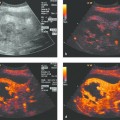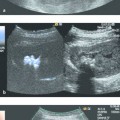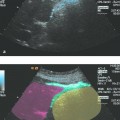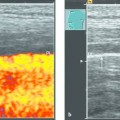Pathology and Cytology Pathology deals with the diagnosis and classification of pathologic changes in organs and tissues. Pathology has become an essential tool for intravital diagnosis. Pathologists examine biopsies, surgical specimens, and intraoperative frozen sections. Their services include the cytopathologic evaluation of cells and smears collected from mucous membranes and aspirated fluids. This subject is explored more fully in Chapter ▶ 6. Despite the capabilities of modern imaging and interventional techniques and biochemical methods, a histologic diagnosis based on the biopsy of a suspected malignancy is still the fastest, safest, most reliable, and most cost-effective method for establishing a precise diagnosis. The histologic evaluation of tumors is essential not only for initial diagnosis but also in the follow-up care of patients who develop recurrent or metastatic disease. An excisional biopsy is a large tissue specimen removing the entire lesion. In the case of complete excision the biopsy is surrounded by adjacent connective tissue, muscles, nerve tissue, and blood vessels. Excisional biopsy with complete removal of the entire lesion is recommended for melanocytic lesions or skin tumors. In an incisional biopsy, only a portion of the suspicious lesion is surgically removed. In endoscopic biopsy, tissue samples are taken with an instrument introduced through the working channel of an endoscope during an endoscopic examination. Ulcerated lesions in the stomach or bladder are sampled with a small forceps (punch biopsy). A raised lesion can be completely excised with an electrocautery loop. Individual, loosely adherent cells can be collected with a small brush and transferred to a glass slide for cytologic evaluation. The procedure is completely painless, although a small tissue sample may still have to be removed if the pathologist finds abnormal cells in the smear. This is a procedure in which material is carefully scraped from a mucosal lining using a spoonlike instrument. Fine needles with an outer diameter of 1.0 mm or less are used for “partial biopsies.” Fine needle biopsies that collect mostly cytologic material (needle diameter <1 mm) are known by various terms in everyday practice. Common synonyms for fine needle biopsy (FNB) are Fine needle aspiration (FNA) Fine needle aspiration biopsy (FNAB) Fine needle aspiration cytology (FNAC) Fine needle cytology (FNC) It is understandable that fine needle biopsies have an inherently high “sampling error,” especially in the case of focal lesions. Thus, fine needle biopsy has an error rate of approximately 40% in focal liver lesions but is more than 90% accurate in the diagnosis of diffuse tissue processes.1 For this reason, blind biopsies should be performed only when there is suspicion of a diffuse process (such as hepatitis or an autoimmune disease). In practice we try to avoid the term “blind,” since most “blind biopsies” nowadays are actually performed with ultrasound guidance (e.g., a Menghini liver biopsy). Focal lesions should always be biopsied under imaging guidance (ultrasound, fluoroscopy, CT, MRI) to reduce the rate of false-negative diagnoses.2,3 A special technique is the fine needle aspiration biopsy, in which a fine needle, introduced percutaneously or after thoracotomy or laparotomy, collects material that is then smeared onto glass slides like blood4 (see Chapter ▶ 6). Generally speaking, the same basic principle applies to histology as to cytologic analysis: close cooperation between the clinician and pathologist is essential for establishing a precise diagnosis. Cytology is not a substitute for histology. The parallel application of both techniques is needed for diagnostic accuracy. Thus, the question of “histology or cytology?” should be answered “cytology and histology!” since a cytologic examination will necessarily provide a lower degree of confidence. For example, cytology alone usually cannot distinguish between carcinoma in situ and a more advanced cancer. Consequently, sound treatment planning would require a histologic examination.1,5 We cannot offer a general recommendation as to when cytology is adequate and, more importantly, when it can provide an adequate degree of certainty. A valid cytologic diagnosis cannot be made for certain tumor entities such as Hodgkin and non-Hodgkin lymphomas. Although immunocytologic testing can be done to distinguish between small-cell and non–small-cell lung cancers, the specimen volume is generally inadequate to allow for ancillary tests (epidermal growth factor receptor [EGFR] mutations, ALK-EML4 translocations). Potential sources of error that may cause misinterpretations include obtaining an inadequate specimen volume. Also, a biopsy taken from a necrotic area will make tissue classification impossible. Inadequate tissue processing and crush artifacts are other possible factors that can hamper histopathologic evaluation. Of course, the biopsy should always be taken from the disease focus itself and not from, say, an inflammatory area surrounding a tumor (▶ Table 5.1). Histology is concerned with determining the histologic type of a tumor (typing) and its histologic grade of malignancy (grading). Both determinations can also be applied clinically to make a biological and/or prognostic assessment. These kinds of information cannot be consistently or reliably determined from cytologic specimens.6 By providing this information, pathology assumes a key role in oncologic diagnosis. Histologic evaluation is based on the classification, grading, and staging of neoplasms. At organ centers, pathology findings are often correlated with clinical and radiologic findings to establish a definitive tumor stage, which can then help to direct further treatment decisions and recommendations. The histologic evaluation is based on classification and grading. Classification is based on the evaluation of clinical behavior (benign/malignant) and assigning the neoplasm to a tissue of origin (histogenesis). A definite benign–malignant differentiation can be made for most neoplasms based on pathoanatomical findings. Malignant tumors, with their capacity for metastasis, often exhibit “atypias” relative to the original tissue. These changes present microscopically as variable cell sizes and shapes and abnormal nuclear morphology. The latter is marked by anisonucleosis with variable nuclear shapes, nuclear pleomorphism, nuclear hyperchromasia with increased nuclear chromatin staining, atypical nuclear divisions, and a shift in the nuclear–cytoplasmic ratio in favor of nuclear size, all of which reflect a more aggressive biological behavior. Benign tumors have pushing margins and undergo a local, circumscribed, nonmetastasizing type of growth. This contrasts with the destructive, invasive growth of malignant tumors, which may undergo metastasis. Besides invasive neoplasms, precursor lesions are also identified and classified. Studies of premalignant lesions have revealed a typical progression from potential to obligate precancerous lesions and then to (micro)invasive cancer. The relevant genetic changes associated with the various stages of lesion progression have been well investigated for some malignancies such as colorectal cancer. The changes follow a sequence from normal epithelium to a small adenoma (<10 mm with subtle architectural changes and minor cellular and nuclear atypias). Next come larger adenomas (>10 mm) often showing moderate atypias, followed by adenomas with high-grade atypias. The sequence culminates in invasive adenocarcinoma, which may also metastasize. A similar progression of changes has been described for the squamous epithelium of the uterine cervix, for example. Mild, moderate, or severe dysplasia of the cervical epithelium may progress to carcinoma in situ, then microinvasive carcinoma, and finally grossly invasive cancer that may undergo metastasis. In the endometrium, simple hyperplasia without atypias signifies a potentially precancerous change, whereas complex hyperplasia with atypias indicates an obligate precancerous lesion. In between are various grades of dysplasia ranging to in situ neoplasia, described as intraepithelial neoplasia (low-grade for mild or moderate dysplasia and high-grade for severe dysplasia). The cervical form is called cervical intraepithelial neoplasia (CIN, grades I—III), and similar terms exist for the vulva (VIN), vagina (VaIN), prostate (PIN), and pancreas (PanIN). Testicular in situ lesions have a precursor described in the WHO nomenclature as intratubular germ cell neoplasia, unclassified (IGCNU). The tissue diagnosis provides the first subdivision of the various types of tumor that may occur in an organ. The appearance of the tumor is compared with normal tissue to appreciate similarities or differences with regard to cell type and structure. It is not enough to classify a tumor by its primary site as a gastric, colon, or bronchial carcinoma, for example, because neuroendocrine tumors and many other less common neoplasms may also occur at those sites. Once a benign/malignant determination has been made, the tumor must be assigned to a tissue of origin. Most tumors can be classified by light microscopy alone as an epithelial, mesenchymal, neuroectodermal, embryonal, or germ cell tumor. Mixed tumors with epithelial and mesenchymal elements are distinct rarities. Epithelial neoplasms are subdivided into papillomas (squamous cell, transitional cell, or urothelial) and adenomas (cylindrical cell). Malignant epithelial tumors are carcinomas (squamous cell, urothelial, adenocarcinoma, etc.). These terms are further characterized by a descriptive adjective or prefix to indicate distinctive structural features. Examples are villous, tubular, and tubulovillous adenomas of the colon and follicular adenoma of the thyroid gland. Adenocarcinomas of parenchymal organs are described as hepatocellular, cholangiocytic, renal-cell, or thyroid carcinoma. If no morphologic or immunohistochemical differentiating features can be found, the carcinoma is described as undifferentiated (anaplastic) with respect to its growth pattern. Another category of epithelial neoplasms is neuroendocrine tumors, which, like most tumors of endocrine organs, exhibit distinctive features relating to their benign–malignant differentiation. Definitely malignant neoplasms are called neuroendocrine carcinomas.
5.1 Pathology
5.2 Biopsies
5.2.1 Types of Biopsy Procedure
Excisional Biopsy
Incisional Biopsy
Endoscopic Biopsy
Smear Cytology (Exfoliative Cytology)
Curettage
Fine Needle Biopsy
5.3 Histology or Cytology?
5.3.1 Sources of Error
Procedural step
Purpose
Possible errors
Step 1:
Specimen collection
Needle biopsy, excision, resection, extirpation: collecting an adequate amount of representative tissue in good condition
Tissue not sampled from the “pathology” itself but from its surroundings (e.g., when sampling a liver nodule)
Step 2:
Specimen fixation
Tissue preservation (interruption of autolysis and decomposition), preparation for further processing; usually fixed in formalin (4% aqueous formaldehyde solution)
Failure to perform fixation or using an improper fixative solution
Fixation time too long or too short
Formalin concentration too high or too low
Inadequate volume of fixative solution (recommended: 1 part tissue in 10 parts liquid)
Impaired diffusion (organs with thick fibrous capsule, hollow viscus with thick muscular layer)
Step 3:
Specimen submission to the pathologist
Every surgically removed specimen must be submitted in its entirety
Compliance with submission requirements
Delayed or faulty submission
Submission container or requisition improperly labeled
Step 4:
Gross examination by the pathologist
Gross preparation
Assess the size, shape, consistency, appearance, and weight of the submitted tissue
Take representative samples for histologic examination
Removal of unsuitable, unrepresentative tissue samples
Incomplete preparation and/or inadequate sampling
Step 5:
Microscopic evaluation and pathology report
In conjunction with gross examination and clinical findings: typing, grading, staging, R classification (resection status)
Inexperienced pathologist
Careless working technique
Misinterpretation or incomplete classification through not taking all findings into account
5.4 Typing, Grading, and Staging
5.4.1 Classification (Typing)
Radiology Key
Fastest Radiology Insight Engine









